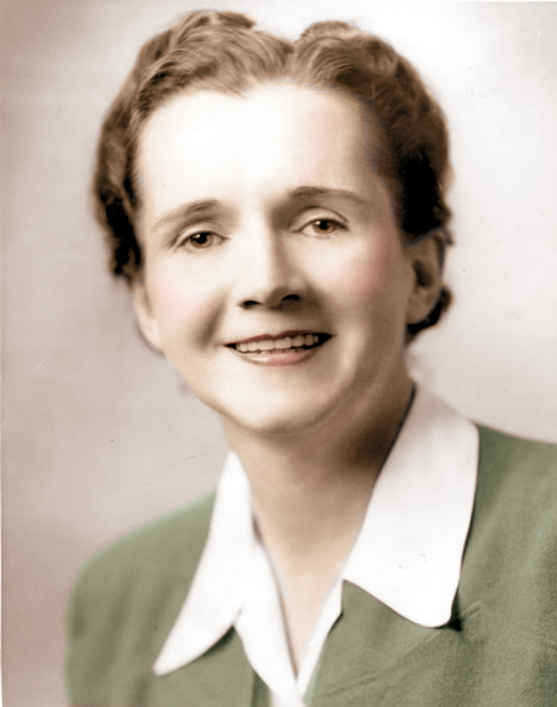Champion of Environment Stewardship
On May 27, 1907, Rachel Louise Carson was born. She spent her entire life loving the natural world, particularly the ocean.
She studied English and marine biology and wrote copy for weekly education broadcasts for U.S. Bureau of Fisheries [later named the U.S. Fish & Wildlife Service in 1945]. As an aquatic biologist, Carson continued writing, moving from bureau brochures to essays and magazine articles and into her first book Under the Sea Wind. Her second book, The Sea Around Us, remained a bestseller for so long, that Carson was able to give up her job to write full time about the environment she loved. She completed her trilogy with The Edge of the Sea.

After many years of research and concerned by rising deaths of shorebirds, Carson wrote Silent Spring in which she examined how human beings have impacted their environments with the overuse of pesticides that impact all life sharing the environment, from the smallest insect right up the food chain to human beings. Along with her warning about environmental disrespect, she encouraged responsible and careful use of chemical sprays, awareness of their impact on the entire ecosystem, and advocated for spraying as little as possible to limit the development of resistance to the chemicals.
Over 50 years later, issues Carson raised in Silent Spring have become well documented in media reports and recordings of endangerments, extinctions, and impacts upon biodiversity we create in our environments.
In 1966, the U.S. Fish & Wildlife Service established the Rachel Carson National Wildlife Refuge with the State of Maine.
Rachel Carson is considered the most powerful advocate for Nature and environmental awareness of her time. Her well-documented and powerfully written works remain available in print and online. They have inspired individuals, governments, and international organizations to take action not only to protect critical environments and species but also to create environmentally sensitive education policies and to challenge industry to create products that impact the environment with least potential for long-term harm.
B Bondar / Real World Content Advantage